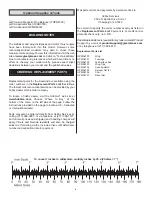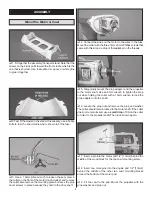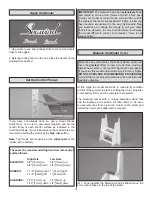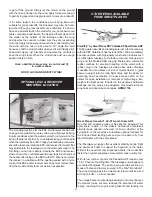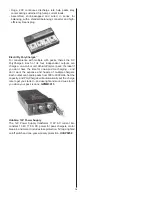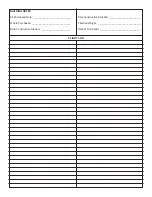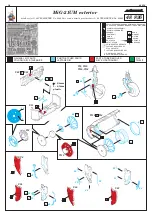
17
to get off the ground. Simply lay the model on the ground
with the nose pointing into the wind, apply full power, allow it
to gain fl ying speed and apply elevator to execute a takeoff.
If, for some reason, the conditions at your fl ying site aren’t
suitable for grass takeoffs, the Seawind may also be hand-
launched (though grass takeoffs are preferred). It’s best to
have an assistant launch the model for you, but experienced
pilots could also hand-launch the Seawind themselves. Hold
the model by the bottom of the fuselage under the wing
and operate the controls to make sure they are responding
correctly. Apply full power and launch the model directly into
the wind with the nose up at about a 30° angle. Be alert
because until the model builds up speed it will initially pitch
downward. Apply “up” elevator and operate the controls to
keep the wings level. When the model has built up enough
speed initiate a climb.
Have a ball! But always stay in control and fl y
in a safe manner.
GOOD LUCK AND GREAT FLYING!
OPTIONAL ESC & RECEIVER
MOUNTING LOCATION
The mounting locations for the ESC and receiver shown back
on page 8 are suitable if you are certain you will always be fl ying
in calm conditions when the water is smooth (or if you will not be
fl ying off water at all). But if you anticipate fl ying your Seawind
when the water may be a little “choppy,” precautionary measures
should be taken to protect the ESC and receiver from water that
may splash into the fuselage when the water gets rough. The
fi rst thing you can do is simply relocate the ESC and receiver
where shown. You could also seal the openings in both ends of
the heat-shrink tubing on the ESC with RTV silicone and place
the receiver in a balloon with the opening sealed with a nylon
zip tie. If the ESC and/or receiver ever do get wet, remove them
from the model and dry them out as soon as possible.
OTHER ITEMS AVAILABLE
FROM GREAT PLANES
ElectriFly
™
by Great Planes PBY Catalina EP Sport Scale ARF
Thrilling water takeoffs and landings are just a few hours away
with the PBY Catalina! It has the look of the 1930s-era military/
sea rescue plane, with high-quality construction features such
as a fi berglass fuselage and a factory-covered, built-up wood
wing and tail. Molded ABS wing tip fl oats and a removable
rudder combine for excellent handling on the water, with a
rubber plug in the fuselage providing easy water drainage
if needed. Twin brushless out-runner motors deliver a great
power-to-weight ratio for long fl ight times and the ability for
executing basic aerobatics. An easy-access hatch on top
allows for quick installation or removal of high-voltage, low-
weight LiPo fl ight packs. Included in the generous hardware
package are two props, prop adapters, machined aluminum
prop hubs and observation canopies. GPMA1154
Great Planes Seawind* .60-.91 Sport-Scale ARF
No other R/C seaplane looks or fl ies like the Seawind. This
sport-scale replica of the classic homebuilt amphibious
aircraft draws attention wherever it’s fl own, whether at the
fl ying fi eld or the local lake. Substitute optional retracts for
the included fi xed landing gear and you’ll be able to fl y from
land OR water with the same plane!
The fi berglass wingtips offer excellent stability during fl ight
and double as fl oats to support the Seawind on the water.
Without the need for bulky suspended fl oats, the model fl ies
faster than typical seaplanes. Assembly moves quickly, too.
With its low number of parts, the Seawind ARF requires only
15 to 18 hours of building time. The fuselage and wingtips are
gel-coated fi berglass. The built-up wing and tail section are
made of balsa and factory-covered in Top Flite
®
MonoKote
®
.
The wing simply plugs into an aluminum joiner and is secured
with nylon bolts – no tools needed.
The unique boom-mounted engine design not only enhances
the model’s looks, but also reduces the likelihood of water
“spray” reaching the engine during takeoff and landing. As


